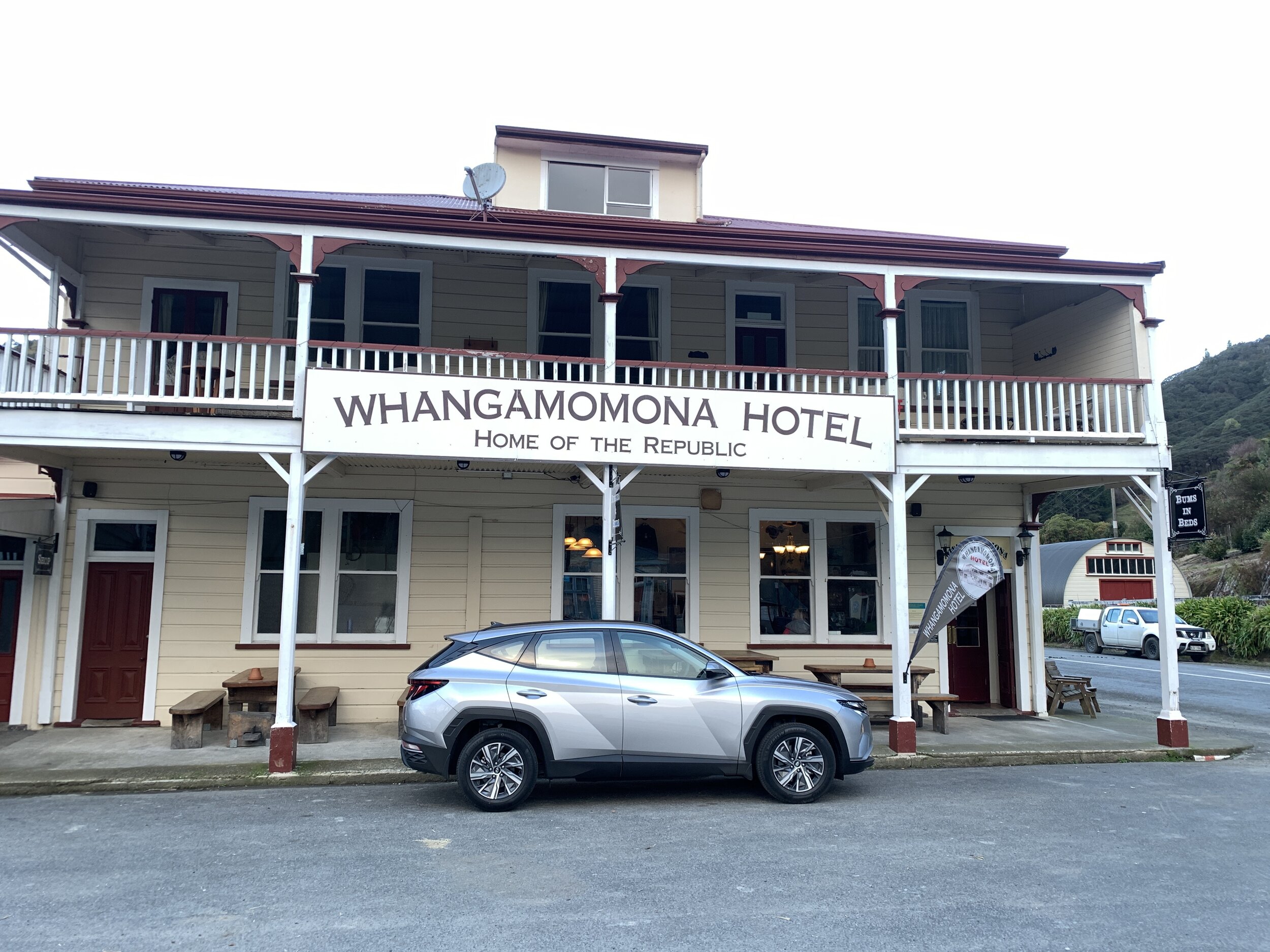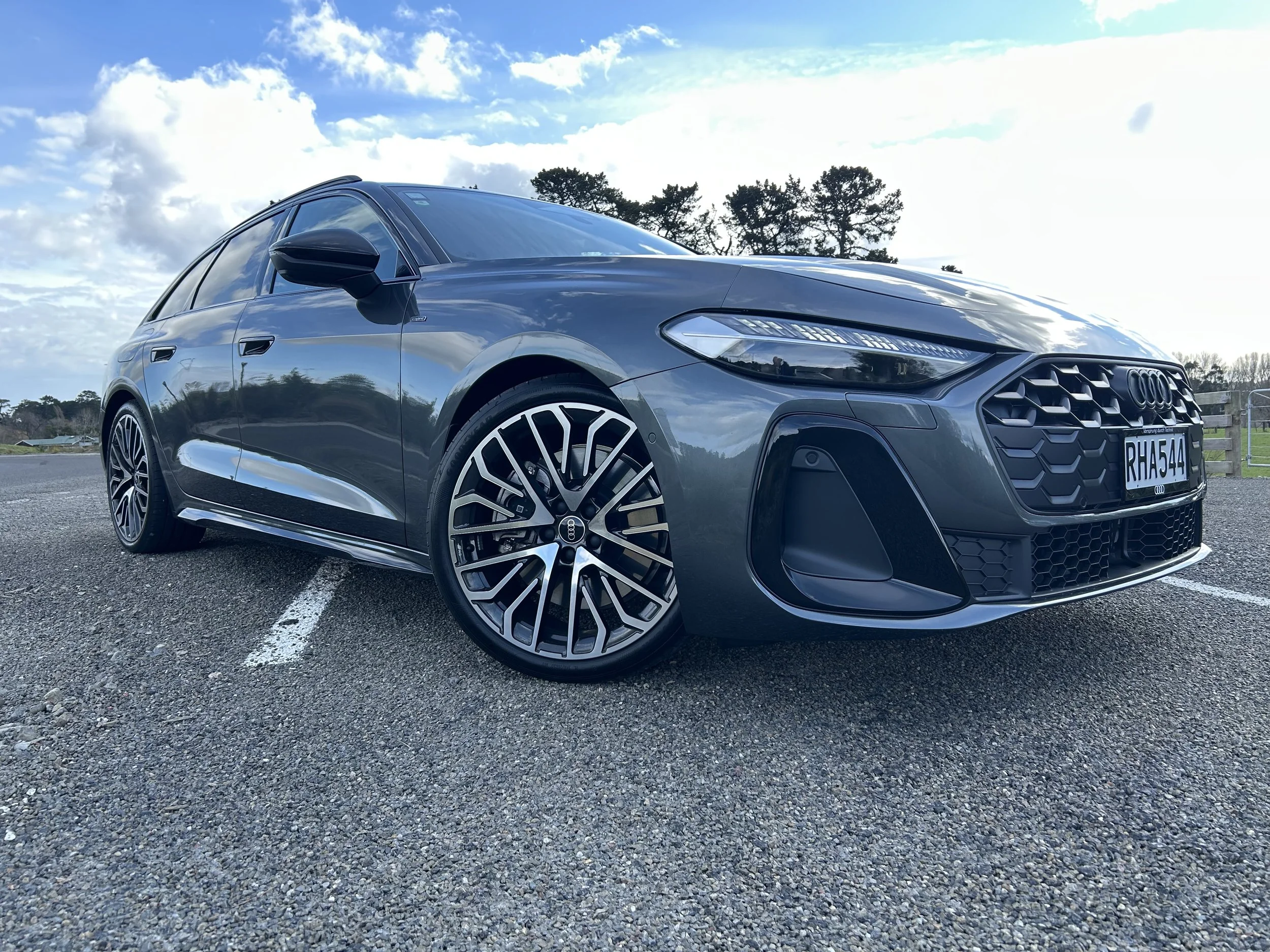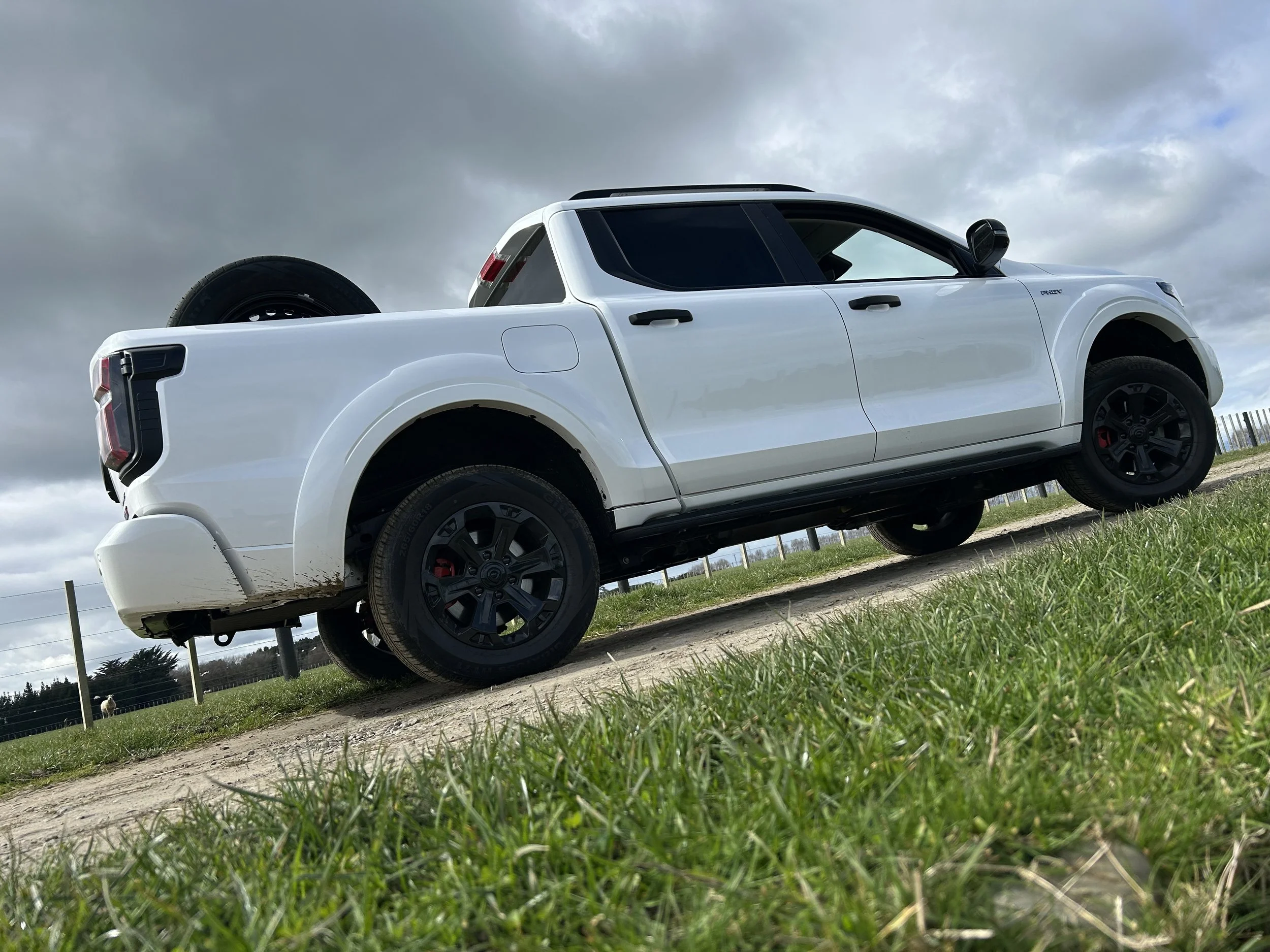Hyundai Tucson first drive review: Euro flavour for Kiwi favourite
/Strident styling, compelling technology and a couple of vivacious 1.6-litre engines raise particular interest.
JUST a couple of years ago, there was big talk about upgrading the highway that formed the central component of the route chosen to demonstrate the talents of the latest Hyundai Tucson.
Nothing came of it. As result, the Moki Tunnel remains devoid of the solar-powered lighting that would have cost $600,000 and much bigger ticket items are even further from realisation.
So, until someone puts up the estimated $1.4 million to sort mobile phone coverage, State Highway 43, aka the Forgotten World Highway, will remain a blackspot. Not necessarily smart when this link between Stratford and Taumarunui is such a driving challenge.
Hundreds of tight and often blind corners, one-way bridges, that tunnel, ripply and potholed seal – save for 12 kilometres right in the middle which has been dirt for 128 years – and very narrow, particularly in the Tangarakau Gorge. Consultants in 2018 reckoned it’d cost $12 million to widen just that stretch alone to five metre width.
So, not the best road to take if you’re an especially cautious type or running an over-sized vehicle. And, at the moment, a road to avoid if you’re in a rental car, because it’s subject to exclusion from some providers’ insurance. Passengers prone to car sickness should also steer clear.
You’d likely best think twice if the weather is bad, too. This run is through papa clay country. It doesn’t take much rain to wash that soapy substance onto the driving line, which makes the surface slippery as.
Rain kept away on our tilt the other day. Instead, having driven the first leg from New Plymouth to Whangamomona, to hole up overnight at the ‘republic’s’ famous hotel (pretty much run by Ted, an awesome-sized, wholly good-natured tabby), we resumed next morning to find the town and the remainder of our route shrouded in truly thick fog.
That made going slower than it could have been; but a degree of prudence is not bad thing here: A farmer hauling a massive trailer-load of hay was the most challenging of traffic sharing the route that morning, but hardly the only obstacle. Animals treat the road as their own and don’t seem too fazed when a flashy medium-sized Korean sports utility comes along their path. The goats scampered but one cow – the biggest of the errant bovines encountered - simply couldn’t be bothered moving at all.
One a good day, with good time to spare, you’ll want to explore this route. The historic stop-offs are numerous; including a genuine ghost town, Tangarakau. Contributor Rob Maetzig visited there on a Hilux adventure in April (https://www.motoringnz.com/tested/2021/4/8/toyota-hilux-sr-on-the-road-to-abandon).
Just down the road there’s the final resting place of Joshua Morgan, a legendary NZ surveyor. He’d been convinced by Government to come out of retirement to survey an eastern road from Taranaki through to the King Country; a route much needed but considered all but impossible, given the terrain.
At the start of 1893 the surveyors had reached Tangarakau River at about the halfway point. Plotting a route through this obstacle was a massive task, but Morgan did it. The road tracks along the river's northern side until reaching a very steep gorge, then it crosses a bridge to the southern bank and snakes its way north until it reaches more open country.
That’s where you’ll find Morgan. He developed severe stomach cramps - probably peritonitis - and died after eight days of terrible pain. He was on a small hill overlooking the bridge that crosses into the gorge. The road opened two years later.
Anyway, if you happen to be driving the new Tucson and intend to test its mettle on this run, then the very best version of the nine launching this month is the one I drove on the second morning.
N-Line is not to be confused with N; the latter is a badge representing full-out performance credential. N-Line is mainly about delivering a raced-up look, though it does deliver some refinement to the suspension. That alone makes it a pick for enthusiast driving. It’s a sharp-handling thing and the 1.6-litre turbo petrol and its seven-speed direct shift transmission does it proud. I can understand why Hyundai NZ reckons this variant, and the luxury-focussed Limited, also at $68,990, could become sweet sellers.
So if that’s the ‘best’ choice, what’s the … well … least appropriate? I’d wager it’s the model I took from Stratford to Whangamomona. The 2.0-litre Tucson Active kicks off the range at $49,990 will fulfil adequately in its primary role as fleet fodder, but as the only variant without a turbocharged engine and the sole version to eschew all-wheel-drive for front-drive, it unsurprisingly was more significantly tested by the drive. Less verve, less traction, more body roll, more mechanical protest … yes, I still made great time with this 115kW/192Nm six-speed auto model. But it’s not my favourite.
These petrol models were the good and the grate on this highway. The best for the overall route, which thereafter went to Piopio then the Tasman coast to track back to New Plymouth, was really the ‘other’ 1.6.
With 100kW and 320Nm, the new diesel has 32kW less power than the like-capacity petrol but also evidences 55Nm more torque. It is therefore stronger in feel and also more relaxed. Just the ‘right’ engine for a long-distance drive, not least when the route is short on refuelling opportunity (there’s just none whatsoever on SH43). This engine fulfils in three variants, including the family’s most expensive choice, the Tucson Limited at $72,990.
Will you buy into it? Hyundai NZ boss Andy Sinclair is intrigued to see if the diesel still maintains a following. The betting goes 50-50 – he says VW’s dieselgate saga has affected a lot of reputational damage – but he’s prepared to give it another go.
One reason for taking a ‘Euro’ Tucson (from the Czech Republic) - and putting up with wrong-way around wiper and indicator stalks plus a slightly shorter wheelbase - is desire to keep Tucson on the right side of our Clean Car legislation.
The model line for Europe achieves lower-CO2 emitting engines than those out of South Korea, notably with the diesel. Hyundai’s home turf factory would have delivered a 2.0-litre whose emissions are above the 192 grams per kilometre limit. The new 1.6-litre rates at 135 grams per kilometre; not clean enough to win credits, but neither will it be penalised.
As much as Hyundai is still playing the fleet market, it admits it is making private buyers more of a priority, given how that sector now accounts for 46 percent of new vehicles, a significant shift on pre-Covid days.
Local in-house research relates that Tucson wins with parents aged 30 and over with females comprising 55 percent of purchasers.
Clearly the Tucson has aspiration to move upmarket and is priced accordingly; stickers will seem fair-to-ambitious depending on the model.
However, the strategy to some extent makes more sense when you consider what is being delivered. This core model’s still strong on practicality, but has a new-found sense of style and quality. There are elements to its design and equipment level that would not be out of place in a truly premium product. Even that base format gets the vibe; as much as the 2.0-litre is overall flavoured to warm an accountant’s heart, the thematic is quite trendy.
The car’s intrigue clearly starts at the kerbside; this is the first model to benefit from the make’s new ‘sensuous sportiness’ design theme. It’s fair to suggest it’s quite distinctive. Which is no bad thing given it competes in category in which there’s an abundance of choices.
Whatever angle you view it from, there’s something in the design to talk about, but obviously eyes are inevitably drawn to the distinctive integration of the LED lights and front grille. When the lights are off, it looks like one large grille, and when illuminated, there's a unique light signature. Very different. Also quite compelling.
The car’s rear is as dramatically styled; tail-lights joined by a slender lightbar is a neat touch; likewise hiding the rear wiper hidden under the roof spoiler. Shame it doesn’t clean a larger section of glass. The Hyundai logo being integrated into the rear window glass and the motif of the front grille being carried through to the surface of the rear bumper signal just how design-driven the car is.
The interior is a little less audacious, but still feels very modern. The elegant sweep of fabric and metallic/piano black finishes across the dashboard speak to a generous budget; soft-touch plastics also abound and the design and materials used generally feel of very high quality, even when cloth supplants leather as a seating cover.
A large touchscreen dominates the centre of the dashboard at top spec, integrated with touch-sensitive heating and air conditioning controls. Below that is a large storage area for your smartphone, with USB and 12-volt ports ahead of it, and wireless charging for such devices. As per the Santa Fe, there’s no trad gear shifter, but instead a collection of chunky buttons on the centre console for drive, reverse, neutral and park. Most variants have leather upholstery to lift the ambience, though the cloth alternate is also suave.
The main driver display in the most expensive versions is wholly digital, on a colour screen. It changes appearance depending on which driving mode you've selected and there are many sub-menus. Plus the instrument binnacle integrates blind spot cameras that display what’s going on around you – a nifty feature. The less pricey models have analogue dials, which might be considered a bonus - given touchscreens often require you to take your eyes off the road to operate - a smaller central screen and a slightly weird Bluetooth phone app hook-up.
Notwithstanding that the Euro Tucson is only a slightly shorter wheelbase than the car that South Korea provisions to other markets (Australia being the only one relevant to us), that dimension is still longer than the old car’s and it’s also a touch wider and taller than its predecessor. With a six-foot driver up front there’s still decent leg room behind and headroom at the back is almost as good as up front. The extra width will be appreciated when you have to put three adults in the back. The outer two positions get ISOFIX mountings and the angle of the rear seat backs can be adjusted for comfort.
The more you spend, the more generous the equipment. It seems odd the rear hatch doesn't open electrically on any variant, that’s the only quibble. Otherwise, all models are stacked. Automatic wipers and lights, electric folding door mirrors, electric windows all-round, reversing camera, Apple CarPlay and Android Auto smartphone integration (Bluetooth on the lesser versions, cable-involved further up) and a fancy KRELL premium sound system, plus an absolutely huge array of active safety equipment span the family.
There’s a ton of tech on board to keep you out of trouble in various driving situations. All models get automatic emergency braking in response to hazards such as pedestrians or cyclists, blind spot warnings and interventions, ‘intelligent’ speed limit warnings and steering interventions to keep you in your lane. The forward collision assist can be a bit too well-meaning in its intrusions but you cannot knock the intent.
The less demanding sections of the route gave good chance to discover how polished a product Tucson is when asked to cruise; notwithstanding how challenging coarse chip is to NVH, it is a quiet operator now.
The SH43 workout, meantime, showed the steering to be accurate and well-weighted, but also demonstrated why AWD is so crucial with this car.
The range runs a variety of wheel and tyre sizes, from 17s on at base through to 19-incher and low-profile rubber at the high-spend end; the Limited and N-Line get the biggest and fattest rubber, trading best looks and grip (on seal, gravel less so) for less comfortable compliance. But that’s no deal-breaker.
Tucson has been effectively absent from sale since last October and the mid-size SUV market is certainly just as competitive now, perhaps moreso, but it seems well on track to continue as it left off.























